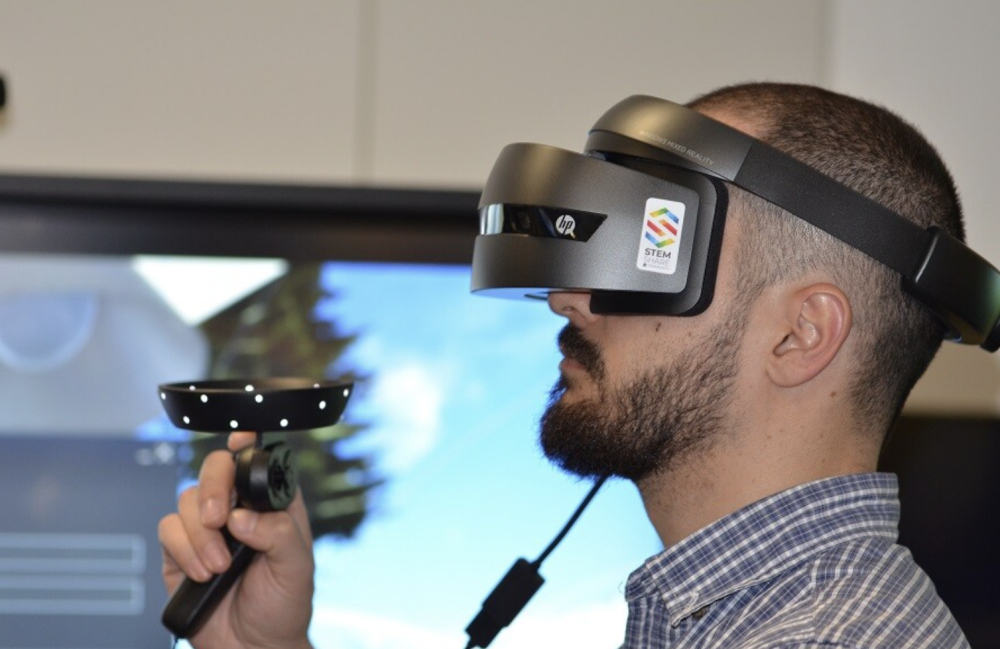VividQ, a UK-based specialist in holographic display technology for AR gaming, and Dispelix, the world’s leading waveguide designer and manufacturer, have announced a breakthrough in 3D waveguide technology, which will allow users to enjoy immersive AR gaming in a natural and comfortable way not known before.
Described by the gaming industry as ‘quasi-impossible’ only two years ago, according to a statement, the two companies have designed and manufactured a ‘waveguide combiner’ that can accurately display simultaneous variable-depth 3D content within a user’s environment.
With it, users will be able to enjoy immersive AR gaming experiences where digital content can be placed in their physical world and they can interact with it naturally and comfortably, the companies claim.
VividQ and Dispelix have also announced the formation of a commercial partnership to develop the new 3D waveguide technology towards mass production readiness. This will enable headset manufacturers the ability to kick-start their AR product roadmaps now.
Early augmented reality experiences seen so far through headsets such as Magic Leap, Microsoft HoloLens, Vuzix, and others, produce 2D stereoscopic images at fixed focal distances, or one focal distance at a time, the statement said.
This can lead to eye fatigue and nausea for users and doesn’t offer the necessary immersive three-dimensional experiences – for example, objects cannot be interacted with naturally at arm’s length, and they are not placed exactly within the real world, VividQ said.

According to the company, in order to deliver the types of immersive experiences necessary for AR to reach mass-market adoption, consumers need a sufficient field of view and the ability to focus on 3D images at the full range of natural distances – anywhere from 10cm to optical infinity, simultaneously – in the same way they do naturally with physical objects.
A waveguide combiner is the industry’s favoured method of displaying AR images in a compact form factor, VividQ explains. This next-generation waveguide and accompanying software are optimised for 3D applications like gaming, which means that consumer brands around the world can unlock the market’s full potential, it said.
VividQ CEO, Darran Milne, commented: “There has been significant investment and research into the technology that can create the types of AR experiences we’ve dreamt of, but they fall short because they can’t live up to even basic user expectations. In an industry that has already seen its fair share of hype, it can be easy to dismiss any new invention as yet more of the same, but a fundamental issue has always been the complexity of displaying 3D images placed in the real world with a decent field of view and with an eyebox that is large enough to accommodate a wide range of IPDs (interpupillary distance, or the space between the user’s pupils), all encased within a lightweight lens. We’ve solved that problem, designed something that can be manufactured, tested and proven it, and established the manufacturing partnership necessary to mass produce them. It is a breakthrough because without 3D holography, you can’t deliver AR.”
Milne continued: “To put it simply, while others have been developing a 2D screen to wear on your face, we’ve developed the window through which you’ll experience real and digital worlds in one place.”
VividQ’s patent-pending 3D waveguide combiner is designed to work in harmony with the company’s software, both of which can be licensed by wearable manufacturers in order to build out a wearable product roadmap. VividQ’s holographic display software works with standard games engines like Unity and Unreal Engine, making it very easy for games developers to create new experiences. The 3D waveguide can be manufactured and supplied at scale through VividQ’s manufacturing partner Dispelix, a leader in see-through waveguides for wearables.
Antti Sunnari, CEO & co-founder of Dispelix, added: “Wearable AR devices have huge potential all around the world. For applications such as gaming and professional use, where the user needs to be immersed for long periods of time, it is vital that content is true 3D and placed within the user’s environment. This also overcomes the issues of nausea and fatigue. We are very pleased to be working with VividQ as a waveguide design and manufacturing partner on this breakthrough 3D waveguide.”
In its Cambridge (UK) HQ, VividQ is able to demonstrate its software and the 3D waveguide technology for leading device manufacturers and consumer tech brands, who it is working closely with to deliver next-generation AR wearables.















